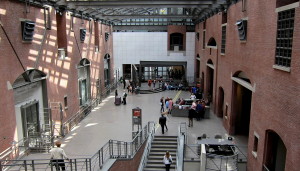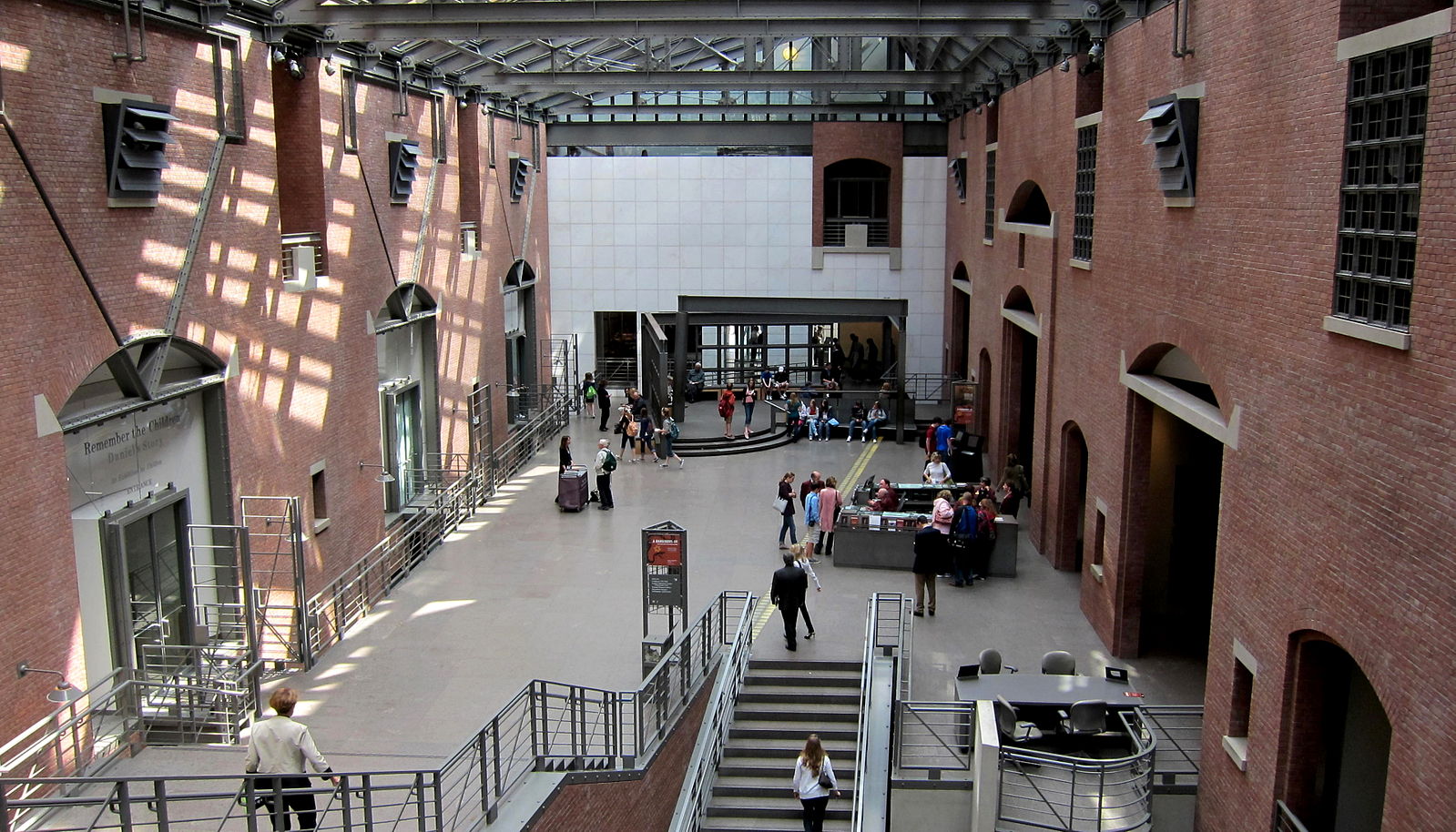
At 8:10 am on Sunday morning people started arriving in front of the high school. Eager, excited, or rather tired and exhausted faces pass by one another. The Washington D.C. trip kicked off this year with a sardonic World War II joke followed by loading up the buses and hitting the road. Two hours later we arrived at the center of D.C., passing famous monuments and landmarks.
At around 1:30 pm we reached the “mall”. We split up into groups and visited an array of museums. Some people lived out their dream of becoming anchormen, while others saw powerful images at the Newseum. Still others went to the Crime and Punishment museum or visited the portrait gallery and engrossed themselves in a hands-on learning experience.
Finally, around 4:30 pm we reached our final destination: the hotel. There was a small café outside it with cute umbrellas and doormen dressed in shiny-buttoned coats and matching hats. Room keys were distributed and kids piled into the elevators up to their rooms, surprised by how lovely they were. For the next few hours students were allowed to go out to dinner and socialize.
The next morning’s wake-up call at 7:00 am shook the whole group and brought with it screams of genuine confusion from many of my roommates. However, after braving the terror, students got downstairs and finished breakfast in a timely manor. Soon after breakfast we loaded our bags onto the bus and rolled out.
At 9:30 am sharp, the Nazi Germany students lined up in front of the United States Holocaust Memorial Museum waiting for it to open. Once inside we were given a passport containing a story and identity of a real person who lived during World War II. This small connection to a real person brought forth a true realization of the gravitas of this museum. As we walked through the unbelievable exhibits, waves of emotion come rolling over us at every turn. Graphic videos of horrifying conditions made many gasp in utter shock.
One room had the voices of holocaust survivors recounting their experiences in concentration camps. You could hear the pain that even talking about it brought to each and every one of them. In that same room there was a step by step clay diorama portraying the tactics of mass executions (as well as how the Nazis were able to cover it up).
Throughout the museum there were objects such as a train car (similar to that of which Jews would transported in) or a concentration camp sign, both bringing an eeriness to the whole experience. In one exhibit, there were four thousand blue shoes, each one slightly unique. The sight and smell of the thousands of shoes of victims was burned in every visitor’s mind. Pictures of survivors’ arms containing the identification numbers in Auschwitz brought tears to many of our eyes.
Towards the end of our visit, there was a room containing candles for the public to light in remembrance of someone. The multitude of candles were set in rows in front of different names of concentration camps. In the center there was an “eternal flame” which burned the soil of different concentration camps. This room created a new powerful impression that was the pure importance of remembering the past.
And the past we remembered. Our group had the amazing opportunity to meet a living Holocaust survivor. She described to us her life as a young women being turned upside down. As a young girl she explained the short time it took from being a well off family to owning practically nothing. She recounted memories of her family getting split up and her mother being taken to a concentration camp on the Spanish border. She explained that all she knew was that she had to try to save her mother. With unbelievable, unadulterated luck and perseverance she found her mother. What many of us found amazing about this 92-year-old woman was her vigor and spirit. She spoke over seven languages and helped the museum with its work in nations all over the world. She spoke honestly about her own realization of prejudices and how she realized her preconceived notions were askew. Her personal journey was insightful and incredible to listen to. After hearing her, every single student was moved and grateful to this women who had shared intimate details about the most pivotal events of her lifetime.
The Holocaust Museum’s mission was “to advance and disseminate knowledge about this unprecedented tragedy.” They designed the exhibit to enhance the understanding of the Holocaust and related issues, including those of contemporary significance. They gave us students ways to improve the future in the form of simply reading the newspaper and being aware of the current disasters. For many, the day was not simply tiring, but also emotionally draining. To even brush the surface of what millions of people went through was an educational experience that every single person felt in their very core. The Holocaust Memorial Museum dove deeply into World War II on an intellectual level, on a philosophical level, and on a human level as well.






